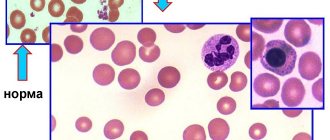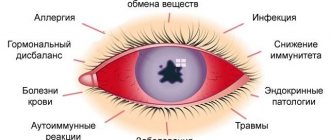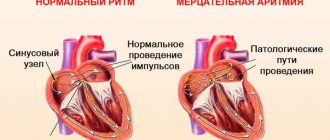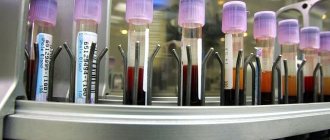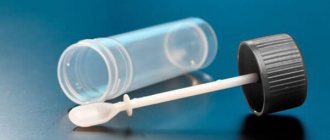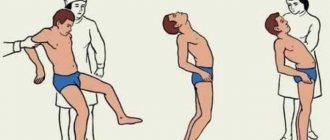Biliary hypertension is a syndrome of increased pressure in the area of the bile ducts. This disease is a sign of a pathological condition of the biliary system or pancreas and develops due to damage to the liver, pancreas or gall bladder.
The nature of the lesion can be toxic or infectious, and indirect causes are poor diet and sedentary lifestyle. Today we will talk about why this pathology develops, how it manifests itself depending on the stage of its progression, methods of diagnosis and treatment.
The essence of diagnosis and classification
In order to classify the disease biliary hypertension, it is necessary to explain in more detail what it is. Elevated pressure readings in the bile ducts are recorded not only with malignant neoplasms in the liver and gallbladder cavity, but are also a consequence of obstructive jaundice.
There is an increase in pressure due to compression of the ducts, and the course of the disease is aggravated by the formation of stones and polyps in the affected areas. As a response to a negative process, the biliary ducts dilate slightly. An area of high pressure can be located in any part of the biliary system, hence there are several types of pathology.
In the early stages of the disease, it is difficult to notice, since the symptoms are not pronounced. Against the background of a latent course and late diagnosis, a number of consequences, sometimes of a severe nature, develop to biliary hypertension. Patients usually go to see doctors when the signs of the disease are pronounced, when they are bothered by intense pain, and there are critical disorders in the functioning of the liver system, pancreas and gall bladder as a whole.
To relieve the symptoms of the pathology, it is necessary to identify the lesion through a comprehensive diagnosis and carry out treatment. Surgery is not recommended to be performed immediately; it is usually started with drug therapy, since hasty intervention often causes life-threatening complications.
Doctors distinguish several forms of the disease:
Essential primary hypertension - what is it?
- The first is manifested by an increase in pressure in the portal bed and special clinical symptoms - this is a violation of blood flow in the splenic vein, simultaneously with normal pressure levels in the portal vein. Signs of total hypertension are also observed.
- The second form is divided into several types of location and can be localized in front of the liver, inside the organ, be post-hepatic or mixed.
- The third form occurs in several stages. At the initial stage, minor functional impairments are observed; at a moderate stage, any impairment can be compensated. The severe stage is characterized by swelling and fluid accumulation in the cavity of the affected organs, and at the complicated stage, the risk of liver failure, bleeding and death increases.
The most dangerous, as has already become clear, is the third form of biliary hypertension, which often leads to the death of the patient. To prevent this from happening, timely diagnosis is required, even if initially the pathology manifests itself only in indirect signs.
No ads 1
Treatment of portal hypertension at the Innovative Vascular Center
In the Innovative Vascular Center, both classical operations to create splenorenal anastomoses and emergency endovascular operations of transjagular portacaval shunting (TIPS) are used to treat portal hypertension.
Endovascular operations are performed on an angiographic complex with the additional use of visualization of the portal vein using ultrasound navigation. Such interventions are performed under local anesthesia with intravenous sedation.
Splenorenal anastomosis operations are performed in intact patients who have suffered bleeding from varicose veins of the esophagus. We perform such interventions under anesthesia through an access in the left side wall of the abdomen with transition to the chest. Such interventions help to avoid the deadly complications of portal hypertension.
Why does the disease develop?
Signs of the disease can develop in a patient of any age and gender, but women are more predisposed to the manifestation of the pathology. Predisposing factors may be psycho-emotional overload, diseases of the endocrine system, heredity and other reasons, but doctors consider the following to be the main ones.
Benign and malignant neoplasms. Regardless of the etiology of the tumor, their formation is an obstacle to the normal outflow of bile from the cavity of the liver and bladder, which is why the first symptoms of biliary hypertension arise. The neoplasm can be localized in the bile duct itself or in neighboring organs, which is why specific areas of the biliary system are affected. The most common cause of this series is considered to be a cancerous tumor of the head of the pancreas.
Sedimentation of helminths and other types of parasites in the ducts of the gallbladder. When the accumulation of parasites interferes with the normal outflow of secretions, symptoms similar to cholecystitis occur, which complicates timely diagnosis and selection of the correct treatment method. In fact, the patient's biliary hypertension of a toxic-parasitic nature is aggravated, and therapy is carried out against inflammation of the biliary system.
Abnormal structure of the hepatic ducts. Due to this problem, the outflow of bile secretion at all levels of the system is disrupted. The ducts may simply be too narrow or completely impassable, and the more pronounced the anomaly, the more urgent surgical intervention should be. Systemic diseases of the liver, gall bladder and their ducts. Against their background, stones and polyps form and obstructive jaundice develops simultaneously with an increase in the level of biliary pressure.
Also, symptoms of the disease can appear after severe liver intoxication, biliary tract obstruction and as a result of chronic venous stagnation in the hepatic system. Often, the initial signs of biliary hypertension appear after long-term treatment with certain groups of medications - antidepressants, beta-blockers, hormonal drugs.
In most cases, the human body has enough of its own resources to overcome the initial stage of the disease. But in the presence of one or more of the factors listed above, these possibilities become insufficient, which is why the symptoms of the disease become more and more pronounced.
No ads 2
BILIARY DYSFUNCTION: definition, classification, diagnosis, treatment
Definition (pathomorphological background)
Despite the fact that they try to consider the biliary system (the system of bile ducts and sphincters that regulate the flow of bile) separately from the main organ (liver), it is part of it and functions in accordance with this.
The hepatocyte is conventionally divided into 3 independent units: sinusoidal, lateral and canalicular parts. The apical (canalicular) part of the cytoplasmic membrane of the hepatocyte differs in histological and biochemical properties and is involved in the formation of the lumen of the bile capillary. Each liver cell takes part in the formation of several bile canaliculi (BCs). At the periphery, the bile duct lobules merge into the bile ducts themselves, which pass at the exit into the interlobular connective tissue into interlobular tubules, which, merging, form interlobular ducts of the first order (second - when they are already lined with prismatic epithelium). Tubular-acinous mucous glands, a connective tissue membrane, and elastic fibers appear in their walls. The interlobular ducts, merging, form large hepatic ducts - lobar, leaving the liver and, in turn, forming the common hepatic duct, the continuation of which is the common bile duct, its beginning is considered to be the junction of the hepatic duct with the cystic duct. The common bile duct is divided into supraduodenal, retroduodenal, retropancreatic, intrapancreatic and intramural sections.
The distal part of the common bile duct passes through the thickness of the head of the pancreas, and the duct opens on the posterior wall of the descending duodenum, 2–10 cm below the pylorus. According to various authors, the width of the ducts can vary: common bile duct (GC) - from 2 to 4 mm; hepatic - from 0.4 to 1.6 mm; cystic - from 1.5 to 3.2 mm. According to x-ray data, the width of the coolant duct is from 2 to 9 mm; according to ultrasound - in the presence of a gallbladder (GB) - from 2 to 6 mm, and without a gallbladder - from 4 to 10 mm. The capacity of the gallbladder ranges from 30 to 70 ml. At the junction of the gallbladder and the cystic duct, the muscle fibers take a circular direction, forming the sphincter of the gallbladder duct (Lutkens). Motor innervation is carried out by the sympathetic and parasympathetic nervous system. Nerve plexuses are present in all layers of the biliary system. Sensitive fibers of the gallbladder can only perceive stretching.
Bile secretion occurs continuously throughout the day, with some fluctuations. From 0.5 to 2.0 liters of bile are secreted per day. The direction of bile movement is determined by the interaction of hepatic secretion, the rhythmic activity of the sphincters of the terminal part of the common bile duct, the sphincter of the gallbladder, the cystic duct valve and the absorptive function of the mucous membrane of the gallbladder and all ducts, which creates pressure gradients. From the hepatic ducts and the common bile duct, bile enters the gallbladder at the moment of closure of the sphincter of Oddi (it plays a decisive role in creating the pressure gradient). The sphincter of Oddi outside of digestion is not constantly closed, and small portions of bile systematically enter the duodenum. After the end of the digestive phase, bile enters the gallbladder for 3 or more hours. Most researchers believe that the extrahepatic bile ducts are never at rest, and their active peristalsis is considered from the point of view of regulation of bile flow; duodenal tone (intraluminal pressure) also affects the output of bile. The motor reaction of the gallbladder and sphincter of Oddi is directly dependent on the quantity and quality of food, as well as on the emotional state of a person.
The musculature of the sphincter of Oddi is independent of the musculature of the duodenum. The sphincter of Oddi consists of: the actual sphincter BDS (Westphal sphincter), which ensures the separation of the ducts from the duodenum; the sphincter of the common bile duct itself; sphincter of the pancreatic duct.
The work of the entire biliary system is strictly coordinated, which is ensured by nervous and humoral regulation. The regulatory influence of endogenous peptides from the endorphin group is still not entirely clear. The basic principle of the entire regulatory system is multi-level self-regulation (including locally produced hormones and biologically active substances).
The regulatory component is very complex under physiological conditions and is not completely clear in various pathologies of this system.
Classification, identification of clinical variants of dysfunction, diagnostic approaches
Functional diseases of the biliary tract are a complex of clinical symptoms that develop as a result of motor-tonic dysfunction of the gallbladder, bile ducts and sphincters.
According to the latest International Classification, instead of the definition of “functional diseases of the biliary tract” (Rome Consensus, 1999), the term “dysfunctional disorders of the biliary tract” has been adopted. Moreover, regardless of the etiology, they are usually divided into 2 types: gallbladder dysfunction and sphincter of Oddi dysfunction.
In the latest International Classification of Diseases (ICD-10), under the heading K82.8 only “dyskinesia of the gallbladder and cystic duct” is highlighted and under the heading K83.4 – “spasm of the sphincter of Oddi”.
The parasympathetic and sympathetic parts of the autonomic nervous system, as well as the endocrine system, take part in the regulation of the motor activity of the biliary system, providing a synchronized sequence of contraction and relaxation of the gallbladder and sphincter apparatus.
It has been shown that moderate irritation of the vagus nerve causes coordinated activity of the gallbladder and sphincters, and severe irritation causes spastic contraction with delayed bile evacuation. Stimulation of the sympathetic nerve helps relax the gallbladder. Of the gastrointestinal hormones, cholecystokinin-pancreazimin (CCK-PZ) has the maximum effect, which, along with contraction of the gallbladder, helps relax the sphincter of Oddi. The incentive for the production of CCK-PZ is fatty foods, and the nervous regulatory influences are the pressure gradient and its change.
The main cause of disorders of the rhythmic activity of the biliary system is inflammatory processes in the liver, leading to disruption of bile synthesis, a noticeable decrease in pressure in the ductal system and gall bladder and, in connection with this, to constant spastic contraction of the sphincter of Oddi.
Various surgical interventions (cholecystectomy, vagotomy, gastrectomy) also lead to significant dysfunction of the biliary system. Unlike the processes occurring in other digestive organs, the formation of bile occurs continuously, but the flow of bile into the intestines is noted only during certain phases of digestion. This is ensured by the reserve function of the gallbladder and its rhythmic contractions with sequential relaxation of the sphincters of Lutkens and Oddi. Relaxation of the gallbladder is accompanied by closure of the sphincter of Oddi.
There are primary and secondary dysfunctional disorders. Primary ones are rare and average 10–15%. In this case, a decrease in the contractile function of the gallbladder may be associated both with a decrease in muscle mass (rarely) and with a decrease in the sensitivity of the receptor apparatus to neurohumoral stimulation. Moreover, a small number of receptors can be genetically determined and acquired, due to inflammatory, dystrophic and metabolic disorders. Secondary dysfunctional disorders of the biliary tract can be observed with hormonal disorders, treatment with somatostatin, premenstrual syndrome, pregnancy, systemic diseases, diabetes, hepatitis, liver cirrhosis, jejunostomy, as well as with existing inflammation and gallstones. Moreover, the presence of these diseases does not imply a stable failure of regulatory systems and the perceptive apparatus - we are talking about varying degrees of disorders in different periods, phases of the course of diseases; in connection with this, there is an “undulation” of disorders, up to periods of rather long stability, but with an “easy” transition of this system from stability to motor disorders. Psycho-emotional overload, stressful situations, and general neuroses are important. The vast majority of patients who have undergone cholecystectomy are characterized by insufficiency of the sphincter of Oddi with continuous flow of bile; spasm is less common. Another common cause of biliary disorders is distal gastrectomy, which leads to decreased hormonal regulation and hypotony of the gallbladder.
The classification of dysfunctional disorders of the biliary tract is presented in the table.
For ease of perception and more convenient application in practice, the classification presents unidirectional disorders, although in life they are more often complex in nature, with a predominance of one of the components.
Clinical manifestations are quite well known: with hyperkinetic disorders, colicky pain of varying intensity occurs without irradiation or with irradiation to the right, to the back, sometimes to the left half of the abdomen (with the involvement of the pancreatic ductal system). With hypokinesia - dull pain in the right hypochondrium, a feeling of pressure, fullness, increasing with changes in body position and with an increase in intra-abdominal pressure, changing the pressure gradient for bile flow. Common to different forms of dysfunction are bitterness in the mouth, bloating, and unstable stools.
So, the central symptom of gallbladder dysfunction is the biliary type of pain, and the only objective characteristic can be considered delayed emptying of the gallbladder. Available diagnostic methods do not explain the cause of this phenomenon. There may be several causative factors. It is impossible to exclude such moments as a violation of filling or a decrease in the sensitivity of the gall bladder’s receiving apparatus.
Diagnostic criteria for gallbladder dysfunction are episodes of severe constant pain localized in the epigastrium or in the right upper quadrant of the abdomen, with the following features characteristic:
- episodes lasting 30 minutes or more;
- symptoms occur 1 or more times in the previous 12 months;
- constant nature of pain, decreased daily activity of patients and the need to consult a doctor;
- lack of evidence of organic pathology causing symptoms;
- presence of dysfunction of gallbladder emptying.
A very important objective symptom of impaired gallbladder motility is the ultrasound phenomenon of “sludge” (sediment), which, according to our data [1], can be presented in 2 variants: a) diffuse; b) near the wall. The parietal variant, depending on the clinical situation, can be characterized as “inflammatory”. If there is no inflammation, then the sediment elements that form it are quite large. The entire clinical symptom complex should also be analyzed: nausea and vomiting, irradiation, provoking factors (food, its quality, etc.).
With regard to sphincter of Oddi dysfunction, 4 clinical and laboratory types are distinguished (3 types of biliary dysfunction and 1 type of pancreatic dysfunction). The diagnostic criteria are based on an attack of biliary pain and 3 laboratory and instrumental signs: an increase in AST and/or alkaline phosphatase by 2 or more times with double determination; slower removal of contrast agents during ERCP (more than 45 minutes); expansion of the common bile duct more than 12 mm (studies are carried out during an attack).
The first type of dysfunction is characterized by pain and 3 signs.
The second type of dysfunction is characterized by pain and 1 or 2 signs.
The third type is only an attack of pain.
The fourth type - pancreatic - is characterized by “pancreatic” pain and an increase in the level of amylase or lipase (with mild pain); an increase in enzymes (amylase, lipase) may be absent.
In cases where endoscopic retrograde pancreatic cholangiography excludes the absence of stricture pathology, monometry of the biliary and pancreatic sphincters is indicated.
The World Congress of Gastroenterology (Bangkok, 2002) determined that evidence-based medicine does not require consensus, but rather evidence. Congress participants concluded that sphincter of Oddi dysfunction should not be classified as a clearly defined disease, but as a condition with a variable dysfunction/symptom relationship. It was particularly emphasized that impaired gallbladder emptying is well known as a consequence of inflammatory damage, mechanical obstruction or autonomic denervation. In the absence of these conditions, it is unclear whether delayed gallbladder emptying can be considered a specific clinical problem (nosological entity).
Some principles of treatment of dysfunctional biliary disorders
Considering the above, it should be noted that the main goal of treating patients with dysfunctional disorders of the biliary tract is to restore the normal flow of bile and pancreatic secretion through the biliary and pancreatic ducts. In this regard, treatment objectives include:
- restoration, and if impossible, replenishment of bile production (with the development of chronic biliary insufficiency, which is understood as a decrease in the amount of bile and bile acids entering the intestine 1 hour after the introduction of an irritant. Patients after cholecystectomy almost always develop dysfunction of the sphincter of Oddi, since from normal functioning of the biliary system excludes the gallbladder, and in connection with this, there is an irreplaceable loss of bile acids with the development of chronic biliary insufficiency, which causes both digestive disorders and dysfunctional disorders);
- increased contractile function of the gallbladder (if it is insufficient);
- decreased contractile function of the gallbladder (with its hyperfunction);
- restoration of the tone of the sphincter system;
- restoration of pressure in the duodenum (on which an adequate pressure gradient in the biliary tract depends).
Until now, diet therapy plays a significant role in the system of treatment measures. The general principles of the diet are a diet with frequent meals of small amounts of food (5-6 meals a day), which helps normalize pressure in the duodenum and regulates the emptying of the gallbladder and ductal system. Alcoholic drinks, carbonated water, smoked, fatty and fried foods, and seasonings are excluded from the diet - due to the fact that they can cause spasm of the sphincter of Oddi. When selecting a dietary diet, the influence of individual nutrients on the normalization of the motor function of the gallbladder and biliary tract is taken into account. Thus, with the hyperkinetic type of dysfunction, the consumption of foods that stimulate contraction of the gallbladder should be sharply limited - animal fats, vegetable oils, rich meat, fish and mushroom broths. With hypotension of the gallbladder, patients usually tolerate weak meat and fish broths, cream, sour cream, vegetable oils, and soft-boiled eggs well. Vegetable oil is prescribed in a teaspoon 2-3 times a day 30 minutes before meals for 2-3 weeks. To prevent constipation, dishes that promote bowel movement are recommended (carrots, pumpkin, zucchini, greens, watermelons, melons, prunes, dried apricots, oranges, pears, honey). This is especially important, since a normally functioning intestine means normalization of intra-abdominal pressure and the presence of normal movement of bile into the duodenum. The use of dietary bran (with sufficient water) is important not only for the functioning of the intestines, but also for the motility of the biliary tract, especially the gallbladder, which has sediment.
Among the drugs that affect the motor function of the gastrointestinal tract, the following are used: anticholinergic drugs, nitrates, myotropic antispasmodics, intestinal hormones (CCC, glucagon), choleretics, cholekinetics.
Anticholinergics , by reducing the concentration of intracellular calcium ions, lead to muscle relaxation. The intensity of relaxation depends on the initial tone of the parasympathetic nervous system, but when using drugs in this group, a wide range of side effects are observed: dry mouth, difficulty urinating, blurred vision, which significantly limits their use.
Nitrates (nitroglycerin, nitromint, sustonite, nitro-time, nitrong forte, nitro poppy, nitrocor, nitrosorbide, cardonite) through the formation of free nitric oxide radicals in smooth muscles, which activate the cGMP content, lead to their relaxation. However, these drugs have significant cardiovascular and other side effects. The development of tolerance makes them unsuitable for long-term therapy.
Non-selective calcium channel blockers (nifedipine, verapamil, diltiazem, etc.) are able to relax smooth muscles, including the biliary tract, but this requires the highest possible doses, which practically excludes the use of these drugs due to pronounced cardiovascular effects.
Some antispasmodics selectively block calcium channels (dicetel, panaveria bromide, spasmomen) and primarily act at the level of the colon, where they are metabolized. 5–10% of these drugs are absorbed and metabolized in the liver and can work at the level of the biliary tract. This aspect requires further research, and indirect effects associated with the restoration of the pressure gradient have been noted and can be used.
Currently, among the myotropic antispasmodics, the drug hymecromone (odeston) attracts attention, which has a selective antispasmodic effect on the sphincter of Oddi and the sphincter of the gallbladder. Odeston is effective in patients with dysfunction of the biliary tract, has a choleretic effect, eliminates biliary insufficiency, as well as dysfunction of the sphincter of Oddi, its hypertonicity, including in patients after cholecystectomy.
Among other myotropic antispasmodics, duspatalin should be noted, which selectively affects the tone of the sphincter of Oddi (directly and indirectly); it lacks a universal antispasmodic effect (and, therefore, side effects), but does not have a choleretic effect and in this is inferior to odeston.
For hypofunction of the gallbladder, the main approach to treatment should be pharmacotherapeutic.
The use of drugs that enhance gallbladder motility.
Choleretics:
- preparations containing bile or bile acids: allochol, dehydrocholic acid, lyobil, cholenzyme;
- synthetic drugs: oxafenamide, nicodine, cyclone;
- herbal preparations: hofitol, flamin, holagogum, corn silk, etc.
Cholekinetics: magnesium sulfate, olive oil and other oils, sorbitol, xylitol, holosas, etc.
The choice of drug, which is a very important, if not the main issue, depends on how quickly the effect of therapy is needed. If the fastest possible effect on the patient’s body is required, then it is better to use cholekinetics, and the effect depends on the dose of the drug; if a long course of treatment is necessary, then bile-containing drugs are used; if an anti-inflammatory effect is also required, then the choice should be made in favor of synthetic drugs, but the course of treatment with them will be short-lived; when the patient simultaneously has liver pathology, the choice should be made in favor of hophytol, which has a choleretic and protective effect.
Use of drugs with prokinetic effects
(motilium, debridate). This may also include myotropic antispasmodics: dicetel, spasmomen, duspatalin, halidor, no-spa. It should be remembered that their effects, as a rule, are indirect (they reduce either the tone of the sphincter of Oddi or the pressure in the duodenum). Their effectiveness is dose-dependent, so selection of an effective dose is necessary.
The use of drugs that reduce inflammation and visceral hyperalgesia. Nonsteroidal anti-inflammatory drugs: anopyrin, upsarin UPSA, dikloberl, naklofen, ketanov, solpaflex, brustan, ketonal, movalis, donalgin, ambene, celebrex and low doses of tricyclic antidepressants (amizol, saroten, elivel, melipramine, coaxil).
It is necessary to pay attention to other aspects of treatment. For dysfunction of the sphincter of Oddi: when establishing the first type, papillosphincterotomy is required; type two or three - the possibility of prescribing drug therapy is allowed. It should be borne in mind that hormones (CKC, glucagon) can temporarily reduce the tone of the sphincter of Oddi; Nitrates give a very short-term effect. Botulinum toxin is a strong inhibitor of acetylcholine release. Using it as an injection into the sphincter of Oddi reduces its pressure, improves bile flow and brings relief, but the effect of treatment is transient. For the pancreatic type of dysfunction of the sphincter of Oddi, the standard therapy is surgical sphincteroplasty and pancreatic lithoplasty (drug treatment is carried out only at the stage of absence of complications).
Conclusion
Recently, the attention of the medical community has been drawn to functional disorders of the gastrointestinal tract in general and the biliary system in particular. This is largely due to the fact that with regard to functional disorders there is still hope for their cure, as well as for successful prevention or delay in time of the development of organic pathology (including oncology) that is more severe in prognosis. Today, diagnostic approaches to the treatment of the diseases we have discussed, presented in this article, are being developed. In addition, this work reflects the large arsenal of medications at the disposal of the doctor, who has the opportunity to choose a drug or complex depending on the pathogenetic characteristics of a particular disorder.
Literature
- Sokolov L.K., Minushkin O.N. et al. Clinical and instrumental diagnosis of diseases of the organs of the hepatopancreatoduodenal zone. - M., 1987.
- Minushkin O. N. Dysfunctional disorders of the biliary tract (pathophysiology, diagnosis and treatment approaches). - M., 2002.
- Kalinin A.V. Functional disorders of the biliary tract and their treatment//Clinical perspectives of gastroenterology, hepatology. - 2002. - No. 3. - P. 25–34.
- Yakovenko E. P. et al. Dysfunction of the sphincter of Oddi associated with cholecystectomy (diagnosis, treatment) // Practitioner. - 2000. - No. 17. - P. 26–30.
- Nasonova S.V., Tsvetkova L.I. Experience of using odeston in the treatment of chronic diseases of the gallbladder and biliary tract // Ros. and. gastroenterology, hepatology, coloproctology. - 2000. - No. 3. — P. 87–90.
- Nasonova S.V., Lebedeva O.I. Odeston in the treatment of chronic diseases of the hepatobiliary system // Military Med. magazine. - 2001. - No. 3. P. 49–53.
- Yakovenko E. P. et al. Odeston in the treatment of diseases of the biliary tract // Practicing physician. - 2001. - No. 19. - P. 30–32.
O. N. Minushkin , Doctor of Medical Sciences, Professor, Medical Center of the Administration of the President of the Russian Federation, Moscow
How does the disease manifest itself?
In order to diagnose the disease in time and begin treatment, you need to know about the symptoms characteristic of biliary hypertension:
- jaundice;
- malaise, loss of performance;
- abdominal pain, which is located in different parts of the abdominal cavity, has varying intensity and duration;
- dyspepsia – belching, nausea and vomiting;
- bloating, unstable stools, alternating diarrhea and constipation;
- regular pain in the area of the right hypochondrium.
Since doctors call the formation of neoplasms the main cause of the development of biliary hypertension, the disease itself can often be detected in advanced stages. After all, the growth of benign and malignant tumors occurs asymptomatically. Therefore, the listed symptoms must be treated carefully, because even nonspecific signs may indicate the development of biliary hypertension.
An increase in the size of the spleen is also considered a clear sign of pathology.
Simultaneously with the increase in biliary pressure, the patient experiences hypersplenism syndrome - a decrease in the number of blood cells (leukopenia, anemia, thrombocytopenia). The problem occurs in patients with diseases of the liver system, manifested by hepatosplenomegaly.
When biliary pressure increases due to insufficient outflow of bile secretions, fluid begins to accumulate in the patient's abdominal cavity; this symptom requires immediate medical intervention. In the initial stages, an indirect sign is local swelling - not only the spleen enlarges, the legs also swell.
Results and discussion
It is known that stenting of the pancreatic duct is an effective means of preventing acute pancreatitis after transpapillary interventions [6]. However, such a preventive measure is necessary for patients with a high risk of developing complications. It is well known that risk factors include female gender, absence of biliary hypertension, multiple cannulation of the gastrointestinal tract during the search for the CBD orifice, non-cannulating papillosphincterotomy (PST), young age of the patient, and a history of acute pancreatitis. The determining role of the development of pancreatitis after ERCP is determined by the combination of various risk factors for the development of complications [6]. In the case of our patient, only one risk factor for the development of AKI was identified—female gender. Therefore, the risk of developing acute pancreatitis was assessed as low. In this regard, stenting of the GLP was not performed for prophylactic purposes. Taking into account data indicating the beneficial effect of stenting of the gastrointestinal tract in the prevention of acute pancreatitis after ERCP, attempts are being made to perform this manipulation as a treatment for an existing complication. GLP stenting is the most effective treatment for AKI. This complication is based on swelling of the mouth of the pancreatic duct, caused by electrocoagulation trauma to the tissues of the major duodenal papilla, or as a result of mechanical trauma directly to the mouth of the pancreatic duct. As a result of swelling of the mouth of the pancreatic duct, a violation of the outflow of pancreatic juice into the lumen of the duodenum occurs. This leads to pancreatic hypertension, which triggers inflammation in the pancreas. Antisecretory therapy does not bring a positive effect, since it does not affect the pathogenetic cause. When stenting the gastrointestinal tract, we observed an abundant outflow of pancreatic juice, which confirmed the presence of pancreatic hypertension. Restoring the outflow of pancreatic juice made it possible to achieve relief of pancreatic hypertension, which can be indirectly judged by a decrease in the intensity of pain already in the first hours after the operation. The chosen tactics turned out to be correct. This was confirmed by complete relief of the phenomena of post-manipulation pancreatitis in the next 2 days from the moment of hip replacement.
Diagnostics
Timely identification of signs of biliary hypertension is aimed at confirming the very fact of the disease and identifying the reasons that led to its development. The main focus of the lesion is established and the factors that cause disturbances in the outflow of bile are identified.
The following research methods are considered the most informative in terms of diagnosis:
- Ultrasound of the abdominal organs - it allows you to record an increase in the size of the liver and gall bladder, dilation of the ducts, assess the causes of obstacles to the normal outflow of bile and determine their nature;
- computed tomography - with the help of the study, voluminous neoplasms are identified, their localization, the presence of metastases and the origin of the tumor are determined;
- contrast radiography – necessary to assess the condition of the bile ducts;
- biopsy – biological material is taken for study if the presence of a neoplasm is suspected and there is a need to confirm or refute its malignant nature.
Ultrasound of the abdominal organs is a study that is prescribed in the early stages of the disease
If, during hardware studies, doctors were unable to accurately determine the location of the lesion or the cause of the disease, laparoscopy or laparotomy may be necessary. Typically these techniques are used before surgery.
No ads 3


